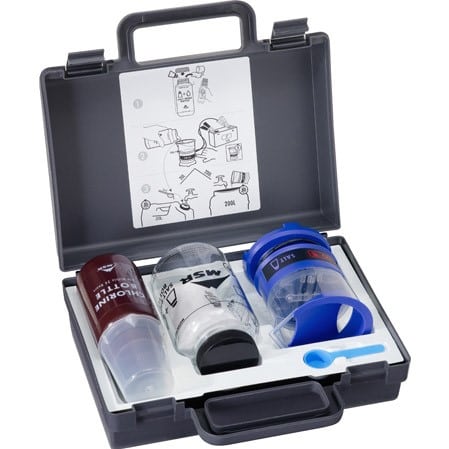
Agriculture
November 9, 2023
MSR SE200 Community Chlorine Maker
Read SolutionImplemented by
MSR
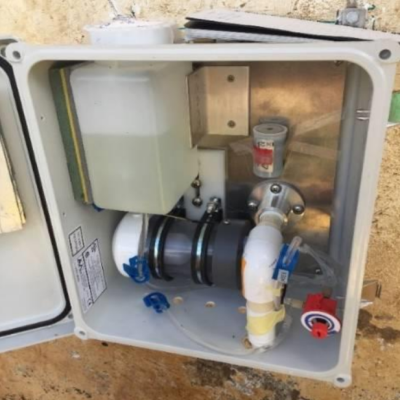
Updated on November 9, 2023
·Created on September 4, 2020
The MSR-Stanford Venturi Doser delivers consistent doses of chlorine to water at public water kiosks.
The MSR-Stanford Venturi Doser is a chlorine doser developed by MSR Global Health, PATH, SWAP Kenya, Tufts University, and Stanford University. The Venturi Doser is installed directly onto the water system of drinking water kiosks to automatically inject a precise dose of chlorine as the water flows. The doser is based on the venturi effect. Water flows through the device and sucks in the appropriate amount of liquid chlorine to dose the water. The dozer has no moving parts and requires no electricity to operate.
Target Countries
Bangladesh, Kenya
Target SDGs
SDG 6: Clean Water and Sanitation
Market Suggested Retail Price
$149.99
Target Users (Target Impact Group)
Community
Distributors / Implementing Organizations
This product was implemented during a study in Kenya by Safe Water and Aids Project (SWAP) in partnership with Stanford University.
Competitive Landscape
Direct competitors include PurAll Water Purification, Dispensers for Safe Water, Lotus Water Chlorine Dosing Device, and Zimba automatic chlorine dispenser.
Manufacturing/Building Method
The prototype is currently manufactured by MSR in Seattle. The chlorine solution can be sourced locally.
Intellectural Property Type
Trademarked
User Provision Model
The product is still in its prototype stage and cannot be acquired by users currently.
Distributions to Date Status
The product has been installed at 170 kiosks supplying to 10,000 people to measure long term performance.
Design Specifications
The MSR/Stanford Venturi Doser is installed directly into the water systems in public kiosks and automatically injects water with a precise dose of chlorine as it produces water for customers. The product uses the venturi effect, which means the product requires no moving parts or electricity. Liquid chlorine fills the chlorine tank which flows into the float tank. Water flows through the device from a larger to a smaller section and sucks an appropriate amount of liquid chlorine to treat the water before being discharged to the customer. The chlorinator uses commercially available Waterguard as its liquid source.
Technical Support
During trials of the prototype technical support was provided by the manufacturer.
Replacement Components
Liquid chlorine
Lifecycle
10 years
Manufacturer Specified Performance Parameters
The manufacturer cites a dosing of 1 ppm and 1.5 ppm free chlorine over a flow rate range of 20-40 L/min as performance criteria.
Vetted Performance Status
SWAP in partnership with Stanford University conducted a study across 170 water kiosks supplying to 10,000 people living in Bangladesh and Kenya. It was determined that point-of-chlorination reduced contamination of fecal indicator bacteria in drinking water by 70% and reduced child diarrhea in children by 23% (95% CI 9-35%; N=4227).
Safety
The World Health Organization (WHO) states free residual chlorine post chlorine dosing should not exceed 5 mg/L if it is to be considered for lifetime use.
Complementary Technical Systems
Filtration prior to treatment can reduce the amount of chlorine required if the source water is turbid.
Academic Research and References
Germann, L., 2019, Evaluation of suitable automatic chlorination devices for gravity-driven membrane water kiosks in Uganda. Masters thesis, Eawag: Swiss Federal Institute of Aquatic Science and Technology, Dübendorf, Switzerland.
Powers, J., et al., 2018, Evaluating the Technical Performance and Sales Viability of a Novel Venturi Chlorine Doser at Drinking Water kiosks in Kisumu, Kenya. 2018 Water and Health: Where Science meets Policy.
Compliance with regulations
Sodium hypochlorite products for drinking water treatment, used in the Venturi doser, comply with NSF/ANSI/CAN 60 to ensure chemicals are safe at maximum dose and impurities are below the maximum allowable limit. The World Health Organisation (WHO) Guidelines for Drinking Water Quality list Sodium Hypochlorite with concentrations between 0.5% and 1% as a point-of-use water treatment method.
Evaluation methods
The Venturi Doser is evaluated for the removal of faecal indicator bacteria (70%) at point-of-chlorination during randomized trials.
Other Information
None

Agriculture
November 9, 2023
Implemented by
MSR
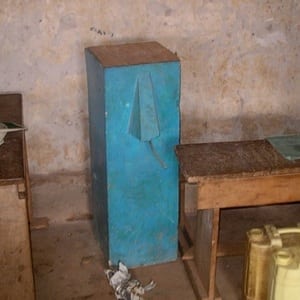
Agriculture
November 9, 2023
Implemented by
BushProof
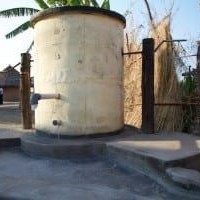
Agriculture
November 9, 2023
Implemented by
Pump Aid
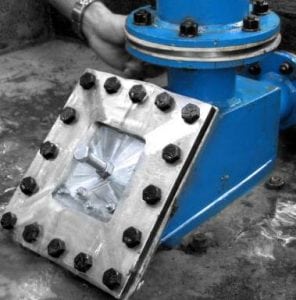
Agriculture
November 9, 2023
Implemented by
AID Foundation Inc. (AIDFI)

Agriculture
November 9, 2023
Implemented by
Lifesaver

Agriculture
November 9, 2023
Implemented by
Piramal Sarvajal
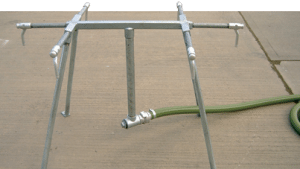
Agriculture
November 9, 2023
Implemented by
Evenproducts
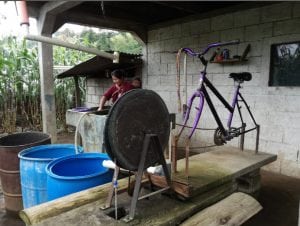
Agriculture
November 9, 2023
Implemented by
Bici tech
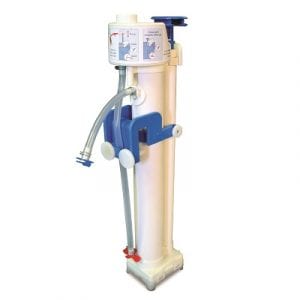
Agriculture
November 9, 2023
Implemented by
Grifaid
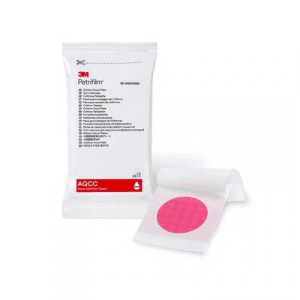
Agriculture
November 9, 2023
Implemented by
3M
Have thoughts on how we can improve?
Give Us Feedback